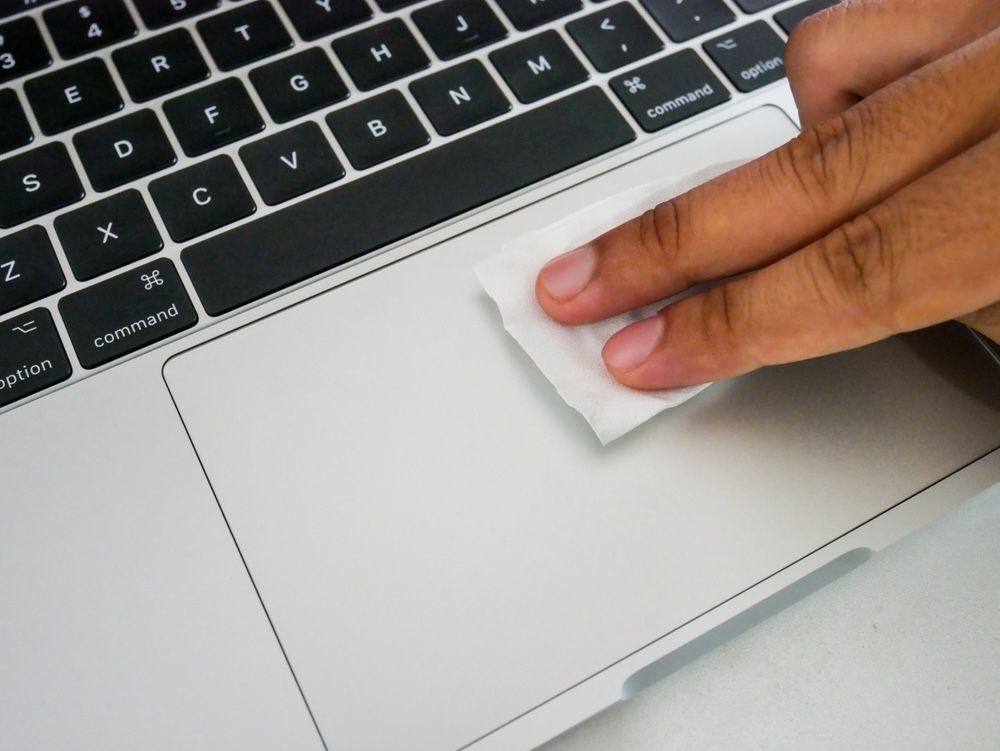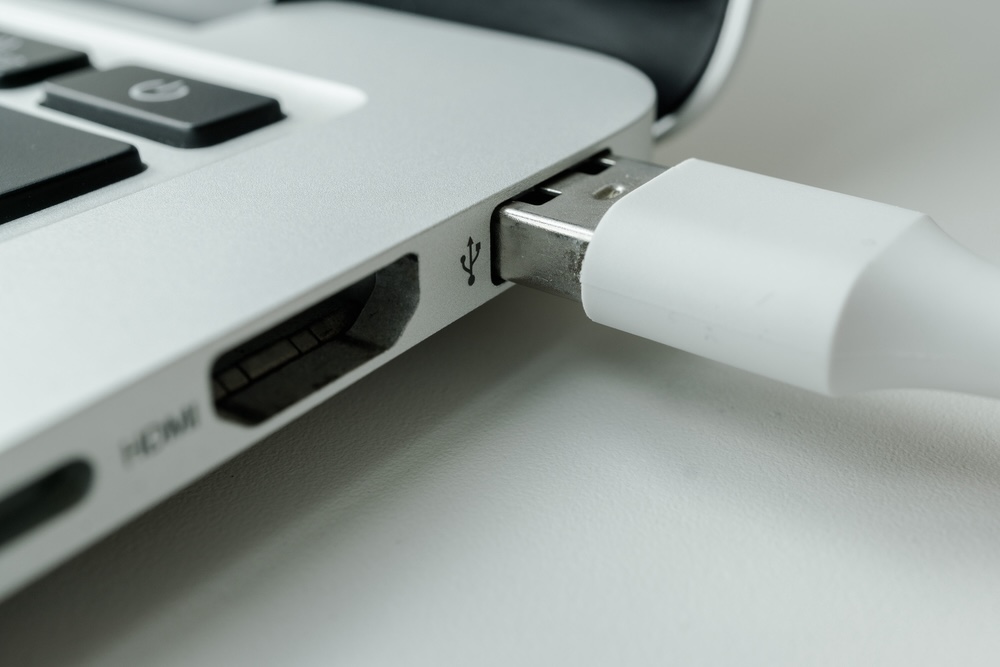How To Keep Your MacBook Clean: Simple Tips for Maximum Impact

Keeping your MacBook clean is essential for both aesthetic appeal and optimal performance. A clean MacBook not only looks better but also runs more smoothly, preventing overheating and hardware issues. Here are practical tips focusing solely on the cleaning aspects to help you maintain a pristine MacBook. Your MacBook is more than just a tool; it's a gateway to your work, your creativity, and your connections. But just like any valued possession, it requires care and attention to maintain its function and shine. Keeping your MacBook clean is not merely about vanity; it's a ritual that safeguards its intricate design and ensures its seamless operation. Over time, dust and debris can accumulate and obstruct your MacBook's performance, potentially leading to overheating and hardware complications. Moreover, a visually appealing MacBook can enhance your working environment, making the hours you spend on it more enjoyable. It's the sheen of the screen where your ideas come to life, the responsive touch of the keys under your fingertips, and the unblemished trackpad that obeys your every command with precision — all these elements are integral to the MacBook experience.
In this comprehensive guide, we'll explore a selection of practical cleaning tips that are easy to implement yet deliver substantial results. These suggestions are tailored for those who wish to preserve the sleek aesthetics and peak functionality of their MacBooks, free from the burdens of accumulated grime and digital detritus. Whether you're a professional whose MacBook is the cornerstone of your livelihood or a casual user dedicated to the upkeep of your digital companion, these tips will help you achieve and maintain the pristine condition of your device. So let's begin the journey to a cleaner, more efficient MacBook.
1. Regular Exterior Cleaning
Materials Needed: Soft, lint-free cloth; distilled water; isopropyl alcohol.
Procedure:
Power down your MacBook and disconnect it from all power sources and peripherals.
Create a cleaning solution by mixing equal parts of distilled water and isopropyl alcohol in a small bowl.
Dampen a soft cloth with the solution and wring it out to avoid excess moisture. Gently wipe down the surface of your MacBook, including the back and sides, to remove fingerprints, dust, and smudges.
Dry the surface with another soft cloth to prevent any streaks.
2. Screen Care

Materials Needed: Microfiber cloth; specialized screen cleaner.
Procedure:
Start by using a dry microfiber cloth to dust off the screen. This prevents abrasive particles from scratching the screen during cleaning.
Apply a small amount of screen cleaner to the cloth if persistent spots remain. Avoid spraying directly onto the screen to prevent liquid from seeping into the screen edges.
Wipe the screen gently, using soft, circular motions to eliminate streaks and marks.
3. Keyboard Cleaning

Materials Needed: Soft brush, canned air, mild cleaner, microfiber cloth.
Procedure:
Turn off the MacBook to prevent accidental key presses. Tilt it at a 75-degree angle and use canned air to blow away crumbs and debris from between the keys.
Use a soft brush to dislodge any stubborn particles.
For a deeper clean, lightly dampen a microfiber cloth with a mild cleaner and wipe each key. Ensure the cloth is nearly dry to avoid moisture damage.
4. Touchpad Maintenance

Materials Needed: Microfiber cloth; isopropyl alcohol.
Procedure:
Clean the touchpad area with a microfiber cloth slightly dampened with isopropyl alcohol. This will remove oils and smudges without damaging the sensitive surface.
Finish by drying the area with a clean part of the cloth to avoid any residue.
5. Port Cleaning

Materials Needed: Canned air, cotton swabs, alcohol.
Procedure:
Use canned air to blow dust out of the USB, Thunderbolt, and headphone ports. Keep the can upright to prevent moisture from entering the ports.
For more stubborn grime, dampen a cotton swab with a small amount of alcohol and carefully clean around the port edges.
Alternative for Isopropyl Alcohol or Alcohol-Based Cleaners
Materials Needed: White vinegar, distilled water.
Procedure:
Create a cleaning solution by mixing equal parts of distilled water and white vinegar. Vinegar is a great natural cleaner that can effectively remove fingerprints and smudges without harming the surfaces of your MacBook.
Dampen a soft, lint-free cloth with the vinegar solution and gently wipe the surfaces of your MacBook. Be sure to wring out the cloth well to avoid excess moisture.
Use another dry, soft cloth to wipe the surfaces dry, ensuring no streaks or moisture remains.
Substitute for Canned Air
Materials Needed: Bulb syringe or manual air blower.
Procedure:
If you don’t have access to canned air, a bulb syringe or a manual air blower, often used for camera lenses, can serve as an excellent alternative. These tools provide a strong burst of air and are reusable.
Use the bulb syringe or air blower to direct bursts of air under the keys of your MacBook's keyboard or into its ports. This method is effective at dislodging dust and debris without the risk of moisture damage associated with improper use of canned air.
These alternatives not only help clean your MacBook safely but are also more environmentally friendly and sustainable compared to their commercial counterparts. Plus, they can be easily found in most households or obtained at local stores, making them convenient options.
Cleaning Schedule: When to Clean Your MacBook
Certainly, establishing a cleaning schedule is as vital as the cleaning process itself. For the exterior surfaces and screen of your MacBook, a weekly wipe-down is recommended to prevent the accumulation of fingerprints and dust which can obscure the display and dull the finish. This regular intervention will ensure your screen remains clear for optimal visibility and your MacBook retains its luster.
When it comes to the keyboard, a bi-weekly cleaning routine is advisable due to its frequent contact with fingers. However, if you find yourself eating over your MacBook or if it's exposed to more particulate matter due to your environment, increasing this frequency to once a week can save your keys from becoming sticky or unresponsive.
The trackpad, given its heavy use and exposure to oils from the skin, benefits from a weekly clean alongside the screen. This maintains its sensitivity and precision, keeping your interactions smooth and effective.
Ports may not require the same frequency of attention but should not be neglected. A monthly inspection and cleaning should suffice, ensuring that connections remain unobstructed by dust or debris. This is also an opportune time to check for any potential build-up that might have been missed during regular cleanings.
By adhering to this recommended cleaning cadence, you can keep your MacBook in prime condition, ensuring that each component—from screen to ports—functions as intended, free from the hindrances of daily grime and buildup.
The Final Polish: Preserving Your MacBook's Legacy
Maintaining the cleanliness of your MacBook is key to ensuring that it continues to operate efficiently and stays looking as good as new. Regular cleaning sessions can prevent the build-up of dust and debris, which might affect its performance and overall health. By following these simple yet effective cleaning procedures, you can keep your MacBook in excellent condition, potentially extending its lifespan significantly. The sleek design of a MacBook is engineered not just to draw the eye but to deliver performance that's as sharp as its aesthetics. By incorporating these cleaning routines into your lifestyle, you ensure that every interaction with your device is as flawless as its first use. A MacBook, much like any piece of sophisticated technology, thrives on precision—precision in its internal mechanisms, as well as in its external care. Dust and debris are more than just unsightly; they are impediments to this precision. A routine cleaning not only safeguards the intricate workings of your MacBook's keyboard and ports but also maintains the clarity of its screen and the responsiveness of its trackpad.
Furthermore, this regimen of cleanliness transcends the immediate gratification of a spotless device. It is an investment in the longevity of your MacBook. By regularly removing potentially damaging materials and ensuring that vents are clear to prevent overheating, you're contributing to the health and durability of your device. This is especially crucial in a world where technology is so integral to our everyday lives; your MacBook is a gateway to your work, your creative endeavors, and your personal connections. The simple, yet effective procedures detailed in this guide are designed to be easily integrated into your routine, offering a straightforward approach to an often overlooked aspect of digital device ownership. Your MacBook is a canvas of innovation and productivity, and keeping it clean is an homage to its significance in your life.
In conclusion, let each swipe of the cloth across your MacBook be a reaffirmation of its value to you. Embrace the responsibility of its upkeep, and take pride in a device that remains as efficient and radiant as the day it first arrived in your hands. Your commitment to cleanliness is not just maintenance—it's a celebration of technology and the seamless way it integrates into our lives.
Topics
Check more articles on our blog

Fridge Cleaning Comprehensive Guide for An Odorless and Sparkling Freezer

Keeping Your Dishwasher in Top Shape: Essential Maintenance Tips

How to Clean and Maintain Your Air Purifier for Optimal Performance
